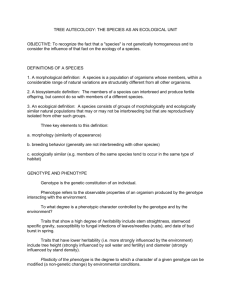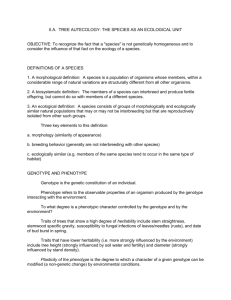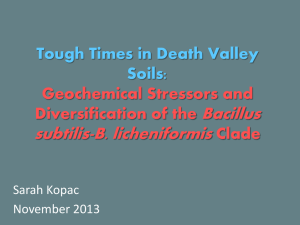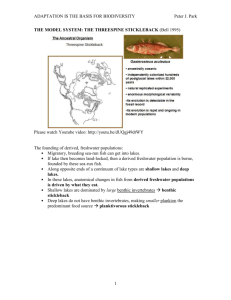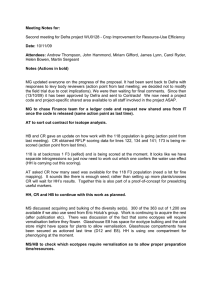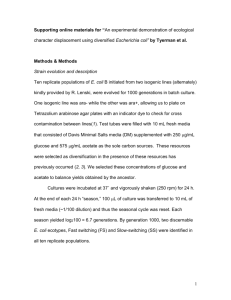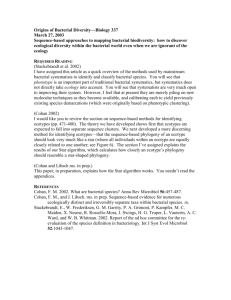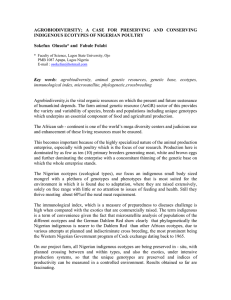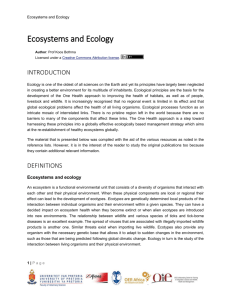Diversification of the Bacillus subtilis
advertisement
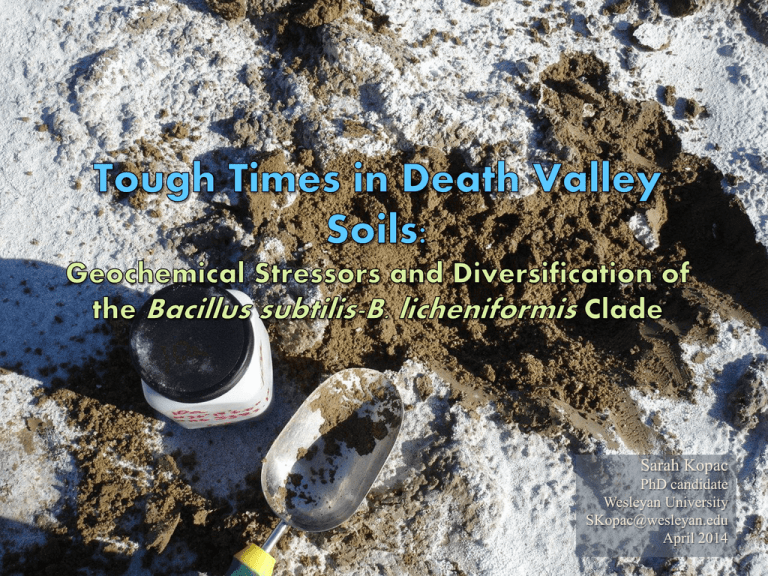
Sarah Kopac PhD candidate Wesleyan University SKopac@wesleyan.edu April 2014 Bacteria have evolved to inhabit virtually all terrestrial habitats Vibrio fischeri Deinococcus radiodurans Bacteroides fragilis Wu et al. 2009 What characteristics of the environment cause bacteria to speciate? • What environmental factors cause speciation? • Are some environmental dimensions more difficult to adapt to than others? • Can we predict which parts of the environment are evolutionarily relevant to bacteria that colonize Spacecraft and/or extra-terrestrial bodies? Ecologically distinct groups exist within species North-facing South-facing Koeppel et al. 2008. PNAS 105:2504. Ecologically distinct groups exist within species Ecotype Simulation analysis of three protein-coding genes in Bacillus simplex. Note: All strains are identical for 16S rRNA! = one recognized species Ecotype Simulation: Rejects a priori criteria. Identifies species clusters based on analysis of population dynamics. North-facing South-facing Koeppel et al. 2008. PNAS 105:2504. Death Valley National Park Soil conductivity, boron and copper levels vary over a transect 1 2 3 4 5 6 7 8 9 10 11 12 13 14 15 16 17 18 19 20 4 transects x 20+ levels x 3 replicates Soil parameters • pH • • Electrical conductivity • (salinity) • • Lime estimate • • % organic matter • • Nitrate:N • • Phosphorus • Potassium Zinc Iron Manganese Copper Boron Texture (sand/clay/silt) 588 strains were isolated from the soil • Screened for Bacillus subtilis-licheniformis • gyrA gene sequenced from each Roughly thirty putative ecotypes have been demarcated from 588 strains B. subtilis subclade B. licheniformis subclade Ecotypes differ in their associations with iron 1 1 1 1 1 1 1 1 1 1 1 1 1 1 1 1 1 0% 20% 40% 60% 80% 100% …as well as four additional soil dimensions 1 1 Parameter P value 1 Iron 1 0.002 1 1 1 Phosphorus 0.0083 1 1 NO3-N 0.016 Soil pH 0.032 1 1 1 1 1 % clay 0.0897 1 1 1 0% 20% 40% 60% 80% 100% Copper tolerance also differs across strains Growth experiments show boron tolerance is ecotype-specific Ecotype A Ecotype B Ecotype C In summary… • Closely related ecotypes differ in their ecologies – Associations with iron, phosphorous, NO3-N, pH, % clay • Strains and/or ecotypes differ in their tolerance for boron and copper • Adaptations to other parameters (salinity, lime, organic matter, potassium, zinc, manganese) might be more ancient, and therefore more difficult Further questions • Is there a genetic basis to differences in growth tolerance? • Which combinations of environmental dimensions are most commonly associated with speciation? • Are resource-based pressures also influencing speciation in this system? Thesis committee Frederick Cohan Annie Burke Danny Krizanc Michael Singer Undergraduates (Krizanc) Diego Calderon Carlos Fransisco Ling Ke Aaron Plave Wei Wang Undergraduates (Cohan) Alexa Bosel Sophie Breitbart Jon Chabon Claire Conway ShyamDesai Wesley Ho Melanie Koren MfundiMakama Janine Petito Jess Sherry Noor Tell Brianne Weimann Greg Wong MA/BAs and PhDs Stephanie Aracena Rob Clark Claire Fournier MenheritGoodwyn Michelle Tipton Jane Weidenbeck Collaboraters Alex Rooney Heather Kline Johannes Sikorski Ecotypes have similar growth at 0mM boron
